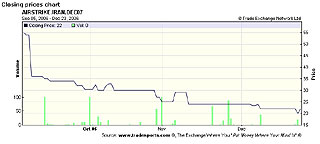Mark Steyn is, as so often in the last years, claiming yet again that the future belongs to Islam.
Point is, demographics aren’t quite as decisive as they used to be, and large, uneducted masses are mostly a danger to themselves nowadays. Not to mention the fact that there only are 15 million Muslims in all of Europe and that their birthrates also aren’t all that high in several countries. German Muslims have a birthrate below replacement level, at about 1.8 babies per woman, and it is rapidly declining even further. The danger of substantial Muslim immigration also is very slim. Our expulsion policies towards Third World immigrants already are inhumane in their draconian harshness, and they are only going to get harsher over time. ‘Our’ Muslims also aren’t a monolithic mass. Especially in Germany we have a lot of Alevites, whom ‘mainstream’ Muslims consider heretics. There is no way that the Alevites make common cause with the more conventional Muslims whom they in return see as a threat to themselves.
As to age structure: The relative proportion of young people is higher than in the ‘native’ populations, but in absolute terms the ‘native’ still have hands down more young people of fighting age, as well as the weapons and all the other stuff that is needed to keep the barbarians at bay. And we will do that, and more, once we feel seriously threatened. Most Europeans so far simply don’t, and there is no concrete danger you could point to, except in some French and Belgian cities. And the Muslim ‘youths’ wouldn’t last more than 10 minutes if they ever tried that crap on French farmers, rather than the urban types, so those specific problems will stay localized.
Mark Steyn is a smart fellow, but when he goes on and on about demographics he is reminding me of the statisticians who claimed in the 1850s that by 1910 the streets of New York would be covered with four feet of horse manure. They couldn’t have foreseen the motorcar. Steyn’s arguments aren’t quite like that, more like that of one of those statisticians who’d refuse to change his opinion even after the invention of the motorcar. He simply isn’t thinking outside of the box. Demographics isn’t what it used to be, the more populous country or ethic group doesn’t win automatically anymore, not for decades in fact. Such a large population would have to invest a lot of time and money into the education and training of its young, and as it happens Islam does exactly the opposite. If there ever are serious conflicts betwen ‘native’ Europeans and Muslim immigrants, the Muslims won’t have a chance.
